Midges in Scotland have a reputation which far outweighs their size, but perhaps not their numbers.
Here in Scotland, we’re not subtle in our campaign to drive the visitors away. We emphasise the rain and then we start with the midge stories. And still people want to come. Well we’ve come up with a plan for you. We’re going to try and make sure you go back home without mentioning midge horror stories and without any stories of being drenched by rain. Our plan: visit the east.
In the Highlands of Scotland, particularly in the Cairngorms, we can have an early frost in September or a late frost in May. Midges can’t survive a frost. If you arrive in Scotland, before the weather has warmed up too much you are unlikely to see many midges. Also if you visit in May or early September, you are also likely to encounter the best weather conditions Scotland has to offer. May 2018 (and June) have been exceptional in sunlight terms, but there is also now an increasing issue with the swarms of midges. Over on the west coast, it can be difficult to find builders at this time of year. Their work requires that they remain stationary or at least around the same site for extended periods of time, and the midges just won’t leave them alone. However, direct sunlight and windy conditions do mean that there are few if any midges around.
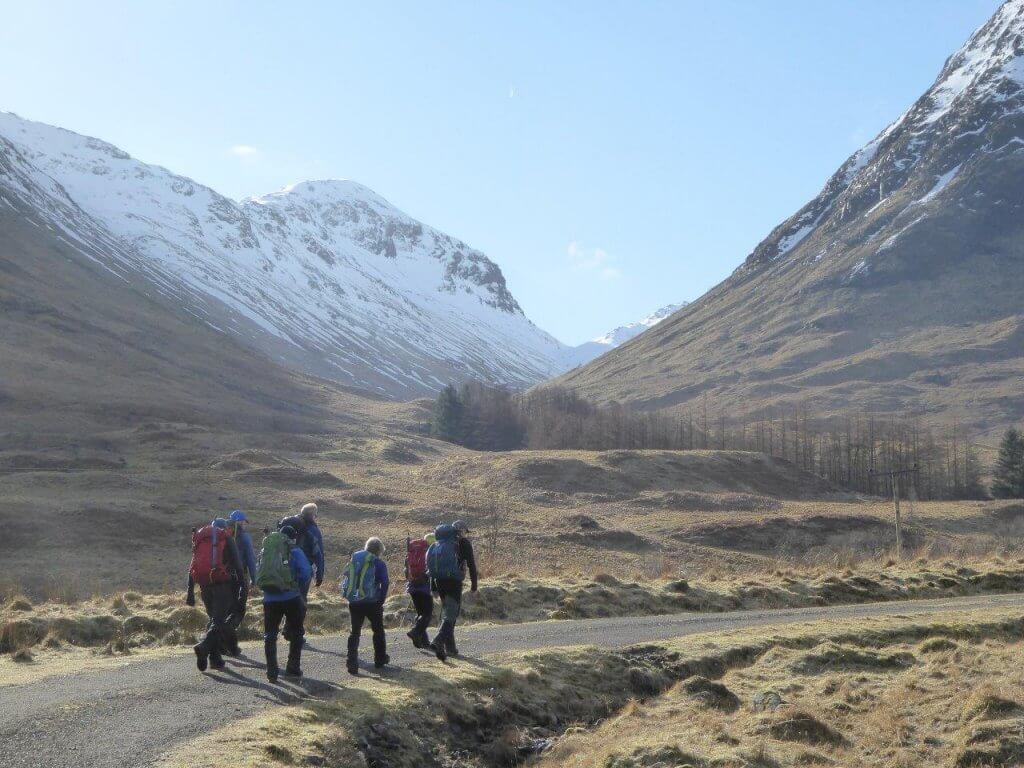
This photo was taken in Glencoe in March. This is when you can really enjoy hiking in the area. There is still snow on the ground, so it is not for the faint-hearted but there are no midges in Scotland and the air clarity is amazing. Perfect for photography.
We plan all our west coast walking holidays around both the best weather conditions and the height of the midge season. We rarely if ever, go to the west of Scotland between June and the end of August.
We have our home base in Boat of Garten in the Cairngorms National Park for a number of reasons. High on the list is the lack of midges, in general. On a still, damp morning/evening, you definitely become aware of their presence in season, but more often than not we rarely encounter them. They can be a bother in the Cairngorms, but the drier weather here and the sometimes windy conditions, keep the levels of midge down to manageable levels.
Midges in Scotland do love damp forest conditions though as the trees provide them with shelter from the wind and the sun, so be careful if you picnic in the woods.
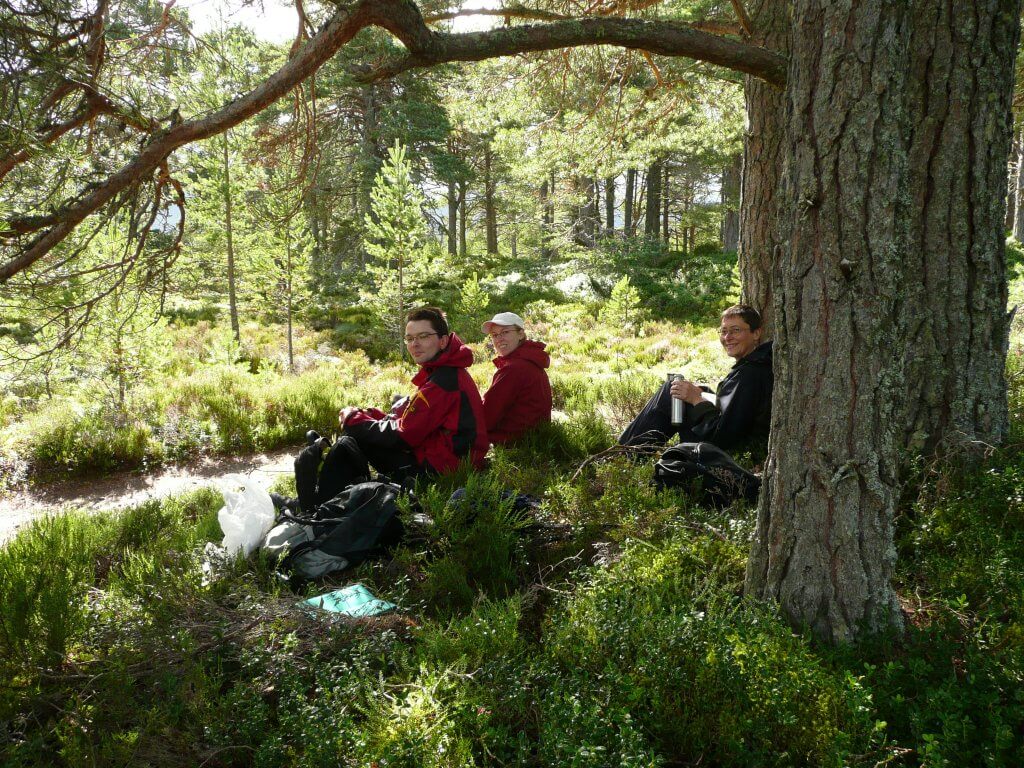
Relaxing in the shelter of the trees – beware the midges on a wind free day.
On still, damp days our best advice would be to engage in something high speed (eg mountain biking or road biking or zip lining) which will keep the midges away from you as you generate your own “wind” ie slip stream. You’ll be moving too fast for them to keep up.
Failing something high adrenaline you could just admire the scenery from the seclusion of your car, being sure to insulate yourself from the outdoors with your air conditioning system or alternatively indulge yourself in a bit of culture or city life for the day.
There are plenty of museums you can visit, even in the Highlands. Or try a castle or distillery.
We recommend the following distillery tours:
Tomatin (especially if you have under-18s in your party)
Glenlivet (regular tours which are translated into most major European languages)
Glenfarclas (a more unique and family atmosphere than other distilleries)
Aberlour (highly regarded and recommended to us)
Or try to Speyside Cooperage – a unique opportunity to see the traditional coopers at work making and refurbishing the casks which are a vital part of the whisky industry.
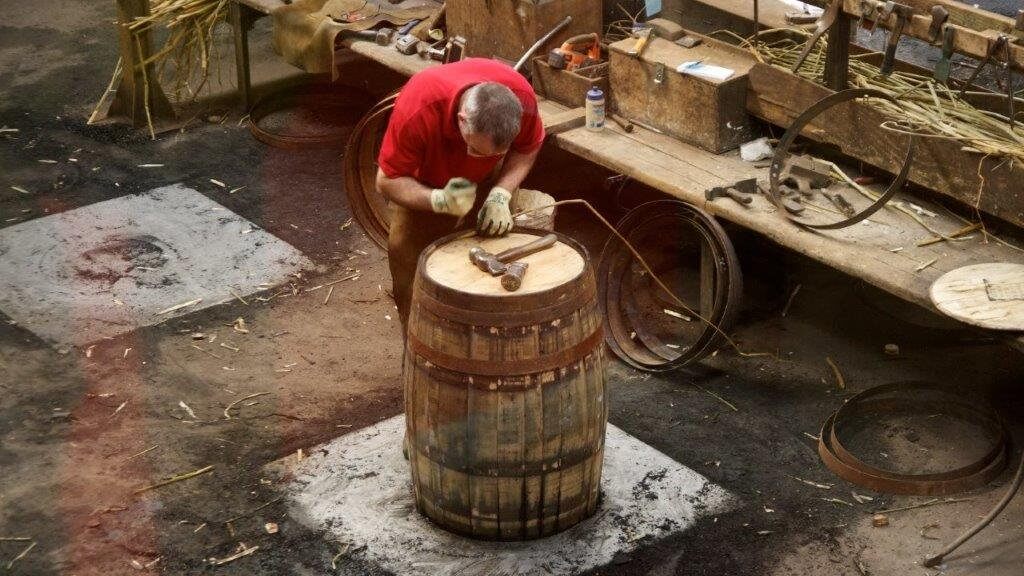
A cooper hard at work repairing casks at the Speyside Cooperage
Midges are so tiny that they can’t tolerate any more than a very light breeze. There is a fine balance in how much wind you can enjoy before it starts to affect your enjoyment of your day out, but hopefully you will find there is a strong enough breeze to keep the midges away, but not too strong to prevent you from enjoying your hike. The strength of wind you can tolerate yourself will depend on your experience and body mass. If the wind is starting to push you around, you’ll stop enjoying your day out and be concentrating too much on trying to maintain a straight line to your destination.
This is probably the hardest one to do if this is your dream vacation to Scotland. Almost everyone has at least one west coast destination on their itinerary, usually Skye. Stock up on plenty of repellent if you’re heading over between June and mid-September.
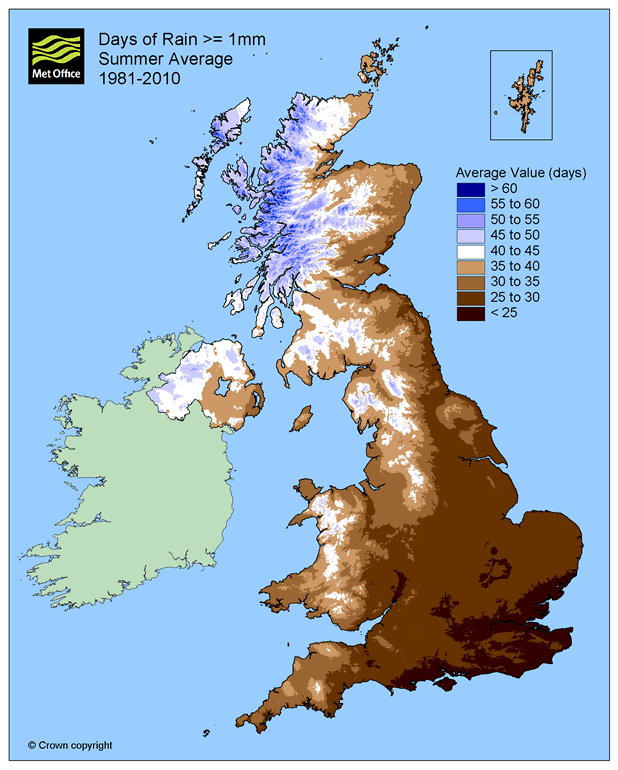
This is relatively easy advice to follow in early summer as dawn takes place so early and dusk so late, but by August it is worth being aware of the sunrise and sunset times.
If you’re planning an active vacation in Scotland, it’s worth checking out our programme as we have planned to include the best of the weather and the best of the midge free opportunities across the Highlands. We can also plan a tailor-made trip for you. If you base yourself with us we have good access to most other areas of the Highlands (except Skye and the Outer Hebrides) and can make the most of the best weather where ever it is.
Other precautions you can take:
For a light-hearted summary take a look at the video below:
There’s no getting away from the fact that if you visit Scotland in the summer you will quickly find out that there are midges in Scotland. If you go hiking in Canada and parts of the US, you need to carry bear spray with you. We don’t have any pests on the same scale as that, but you have no doubt heard about the Scottish midge. It seems to be a scary prospect for a large number of people intending to come and visit Scotland. They can be of plaque proportions sometimes but over here in the dry East of Scotland, we really don’t suffer from swarms of midges at all.
If you’re concerned about the prospect of midges bear the following tips in mind:
Midge facts from the makers of Smidge – a repellent which works.
2. Use repellent, naturally based if possible as deet is not kind to the skin. (A chemical which will melt a plastic bag is surely not designed to be used on the skin repeatedly over an extended period?)
3. Purchase a midge net
4. Use citronella, lavender or bog myrtle candles – preferably in a well-ventilated place or outdoors.
You’ll find that a midge bite from midges in Scotland is itchy and annoying but doesn’t have any long lasting effects. It won’t have any impact on your health long-term. The real pest to be wary of is the tick. I don’t hear anywhere near as much discussion about ticks from visitors planning to come to Scotland, but there is a risk that you should be aware of. Ticks don’t just bite dogs. They don’t just affect hill walkers – in fact, you can be at risk of a tick bite on a dog walk or playing golf.
Midge solutions
[amazon_link asins=’B01EJF6LAE,B00413715E,B002MDAOSQ,B06XKKS2JX’ template=’ProductCarousel’ store=’1603-8102-0783′ marketplace=’UK’ link_id=’1d95a286-6f07-11e8-889b-abcc7d60ddfc’]
Most of the west coast including Skye, Torridon and Arran.
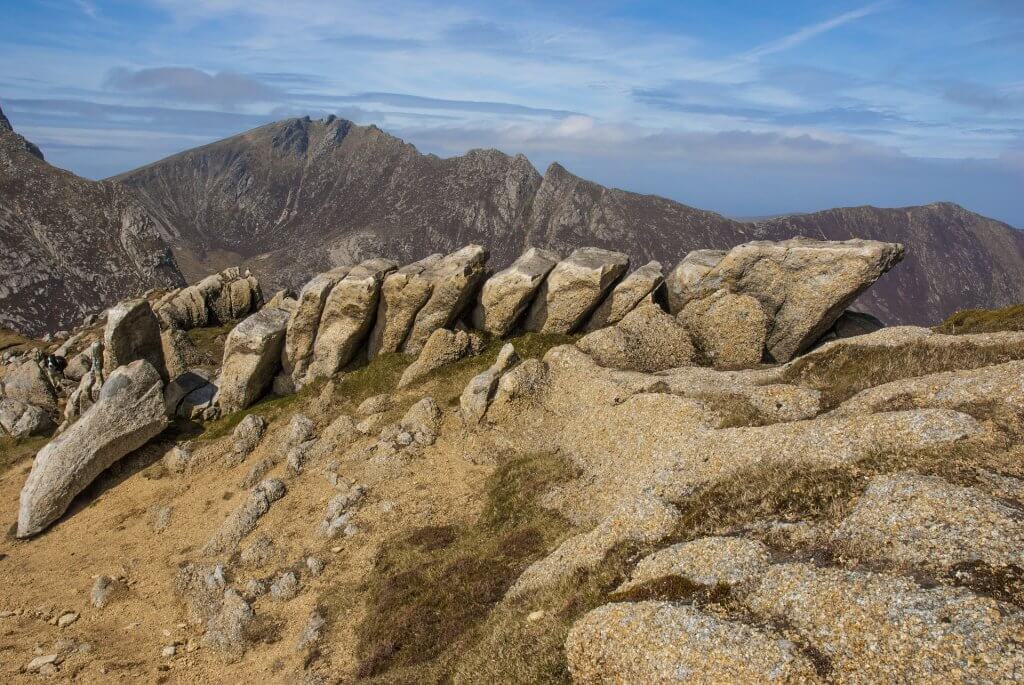
The peaks of Arran
We camped on Arran one year to check out some new routes we were planning to offer our clients. Found the perfect spot to wild camp, set up the tent, (nice breeze blowing all the while). Woke up, unzipped the tent and rapidly zipped it up again. At some point in the night, the breeze stopped and the midge clouds arrived.
You’re most at risk of tick bites if you venture off the main path and brush against any undergrowth as this is where the ticks like to hang out.
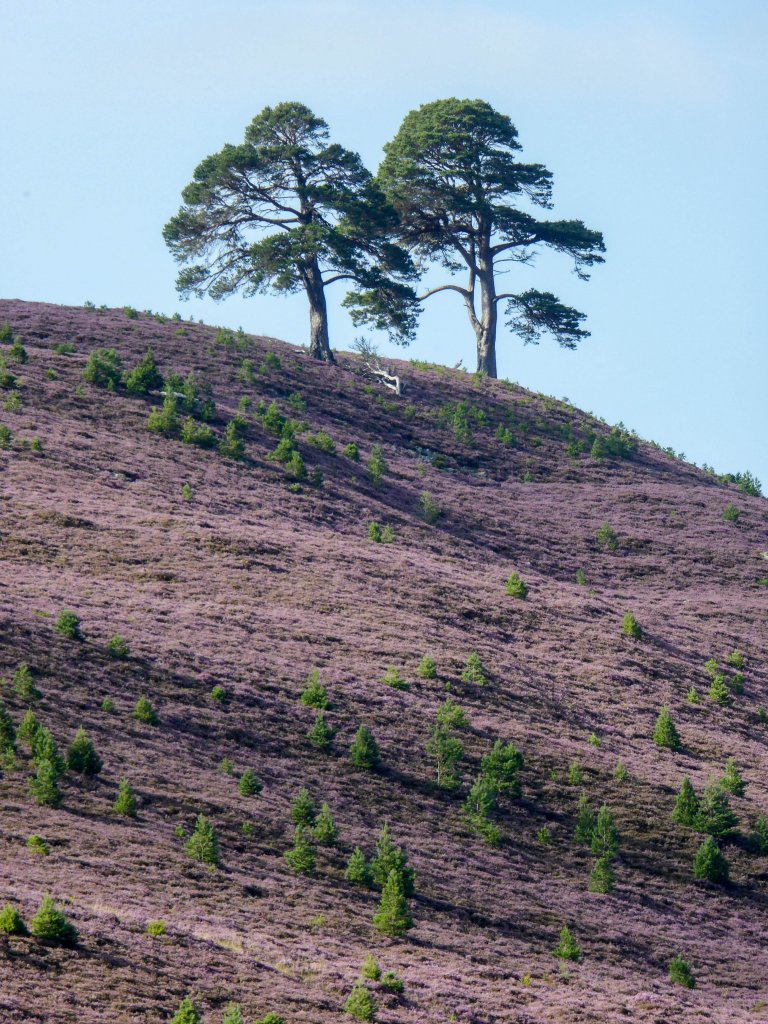
Most Scottish hill walkers are aware of the risk of Lyme disease and do check for ticks when they shower at the end of the day. Some of them can be so tiny that they are very difficult to spot. You pick them up from the undergrowth, just as dogs do. They can hang from the under side of ferns for years waiting for a host to come along. They don’t fly, but they will crawl on you until they find a spot they find warm and dark to attach to you. The most common places to find them are behind your knees, in your groin, or if you’re female, around your boobs.
A tick bite won’t be painful when it attaches to you and it will fall off on its own if left. Once it has finished it’s blood meal. However, it is definitely a good idea to remove it as soon as you can to reduce the risk of Lyme Disease.
Do not just pull a tick off if you find one attached to you. My personal early warning system is that I find a tick bite very itchy, worse (per bite) than a midge bite. If you just pull a tick you risk leaving it’s head attached to you. Also if you squeeze it while detaching it from you, you can force it to regurgitate it’s stomach contents into your bloodstream which will increase the risk of Lyme’s disease.
Tick twisters
[amazon_link asins=’B0037DD27U,B072JXRRBQ’ template=’ProductCarousel’ store=’1603-8102-0783′ marketplace=’UK’ link_id=’278ba43b-6f06-11e8-bce5-0727019eda1e’]
Tick lasso
[amazon_link asins=’B001QC34LS’ template=’ProductCarousel’ store=’1603-8102-0783′ marketplace=’UK’ link_id=’32301992-6f06-11e8-87f8-41d3dad923df’]
Tick map and predictions for the future
We rarely see swarms of midges on our guided hiking holidays.
There are midge hotspots in the Cairngorms, but it really is nothing like the west coast. Linn of Dee can be a wee bit midge infested if you’re hanging around before setting off into the Lairig Ghru, and if you’re at Corrour Bothy in the evening, you’ll possibly see a fair few – but we rarely have to put off our gardening. If we had more time to enjoy the garden we could without being bothered by midges.
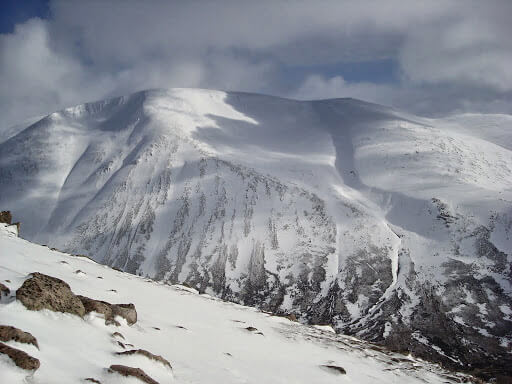
Typical Cairngorm scenery in the snow
We’re off Munro bagging on Skye next week. Does this sound like a foreign language to you? If so we thought we’d add a timely post to the blog just to make sure that our foreign visitors are clear what we’re talking about. What is a Munro? There’s a lot about the language of your home country which you take for granted. Some phrases can even be localised to your own district and even need explaining to your friends and family. “Munros” and “Munro bagging” are hopefully terms which most walkers in the UK are familiar with. If you’re new to hill walking and mountain climbing, here’s a wee guide for you below.
A Munro is “any of the 277 mountains in Scotland that are at least 3,000 feet high (approximately 914 metres).”
Unfortunately this is not all there is to defining a Munro. All sorts of convoluted rules about the distance between summits and the amount of descent between them are used to separate Murnos and “tops”. These are then regularly reviewed by the Mountaineering Council of Scotland when a new edition of the Munros book is due to be published. The number of Munros can go up and down as peaks are re-classified; or you can be a purist and stick to the list as defined by Sir Hugh Munro himself originally.
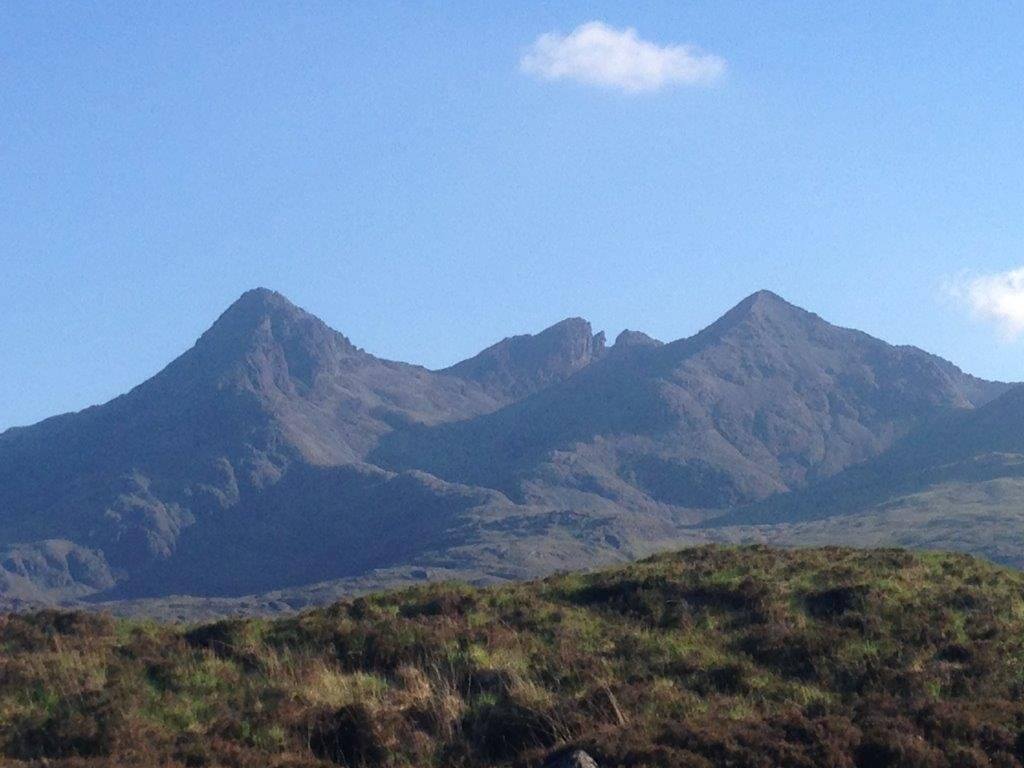
Popular view of the Cuillin mountains from the Sligachan area.
Munro bagging is an addiction which afflicts many dedicated hikers in the UK. As a visitor it may not be immediately obvious what it means. Unlike “train spotting” or “birdwatching” also known as “twitching”, it’s not all in the name. To bag a Munro is to reach the top of the hill then you’re able to tick it off your list. The ultimate aim is to complete a “round” of the Munros. This means that you will have reached the top of all the Munros. What happens when they reclassify though? Do you then have to complete extra routes? Or do you stick with the list as it was when you started your “round”.
A Munro (see definition above) is one of the higher hills in Scotland. Ben Nevis is a Munro so is Cairngorm, Ben Macdui, Sgor Gaoith & Schiehallion among many others. Some are very well-known, some less so. All now have defined paths to the top, usually the most efficient path, rather than the most attractive route as the goal is just to reach the top, not necessarily to take your time doing it.
The sheer quantity of people now “bagging” Munros has created path erosion on the more popular Munros. So much so that a lot of path maintenance has had to be undertaken in places such as Schiehallion.
The best thing about Munro bagging is that if you are intent on completing the whole list/round, then you will visit parts of Scotland you may never otherwise have gone. There are Munros all over Scotland, not just in the Highlands. Some are more accessible than others. Some require camping to reach them (or very long walks/cycles); others (a minority) require climbing skills, like the Innaccessible Pinnacle on the Cuillin Ridge (Isle of Skye)

The spectacular sandstone peaks of Torridon, over 2500 million years old
It doesn’t necessarily pay to be too focused on an arbitrary list. Not all Munros are interesting peaks. Some are boring, rounded lumps. Some efficient routes to the top ignore the more interesting features on the hill (eg Bynack Mor). There are also some peaks in Scotland which are spectacular – but are far less well-frequented because they are not high enough to be Munros. Check out the pictures below and tell me that you wouldn’t want to climb any of these.
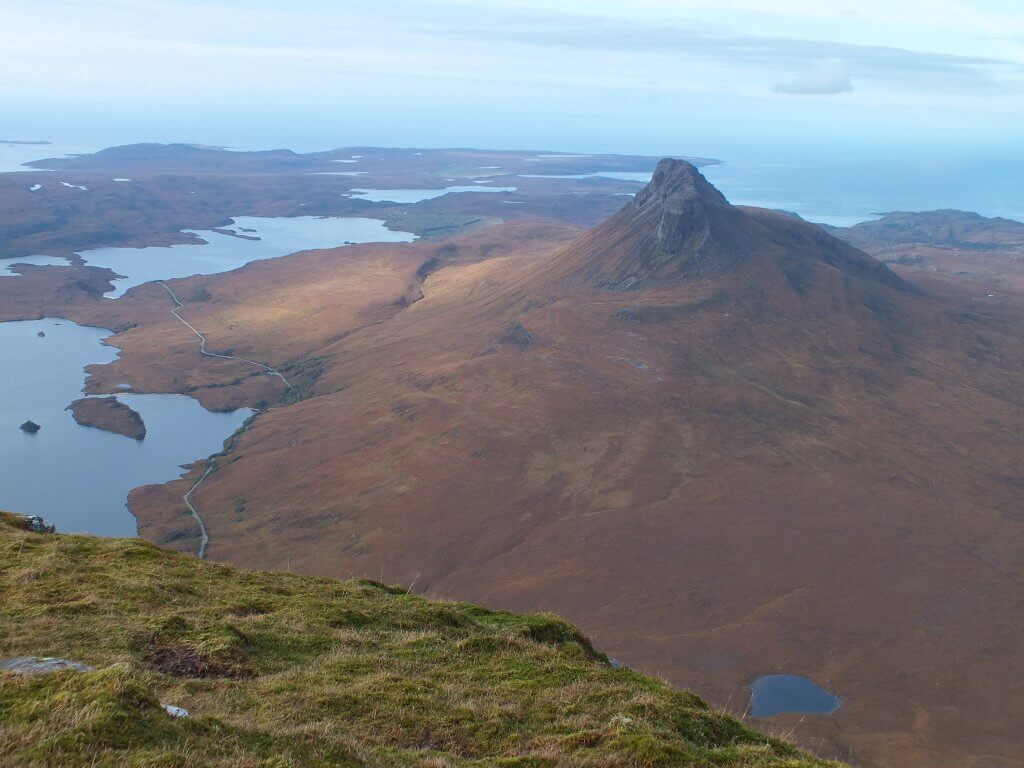
Spectacular Scottish coastline, Assynt (Scotland)
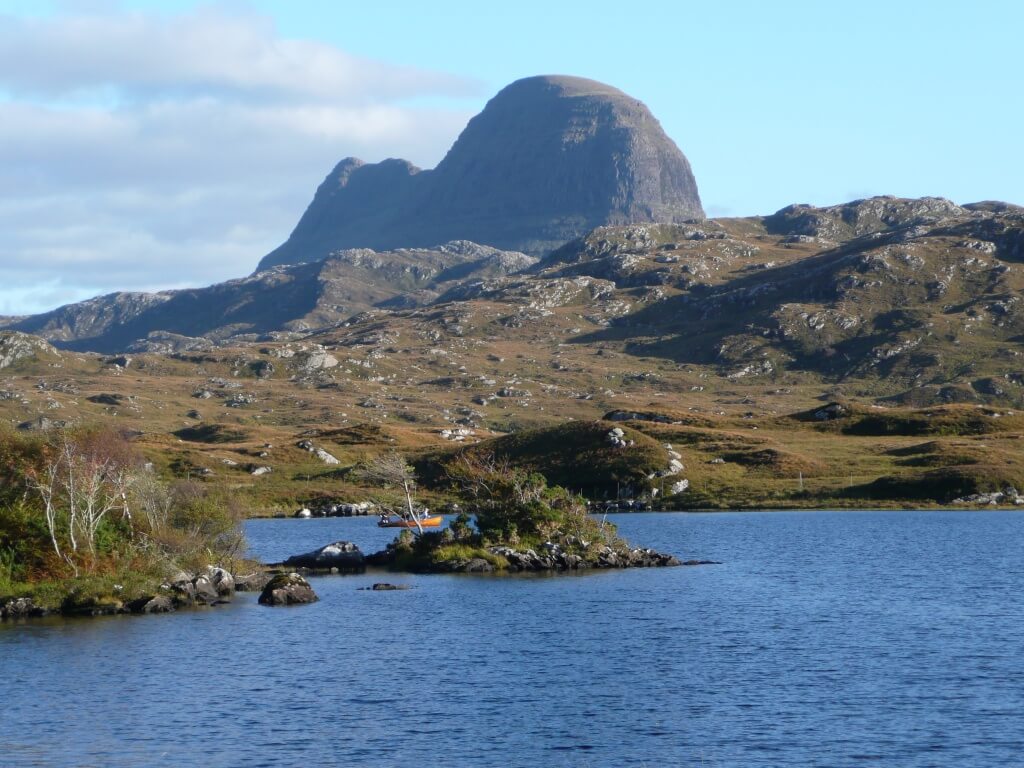
Spectacular views abound in Assynt even though the mountains are not the grandest in height.
Of course, seeing as there is a list for the highest peaks (all those over 3000ft) we couldn’t miss any of the others out, so there are lists for peaks between 2999 – 2500ft (Corbetts) and 2499 – 2000ft, (Grahams) and all those below or alternatively your favourite routes (Marilyns).
Winter Munros
Kintail Munros – details available from Scot Mountain Holidays directly
Private trips: Munro blast weekends – please contact Andy for bookings.
Why go Munro bagging in Autumn?
How to bag all 12 Skye Munros in a week
Why come to Scotland in winter?
Redbull article: Munro bagging – the best Scottish adventure you’ve never heard of
Mountaineering Council of Scotland: The Munros
NB It’s rare to find a Scot who will talk about “Scotch whisky”. For Scots in Scotland, there is no such thing as Scotch whisky. We have whisky or malt whisky or single malt.
The Speyside Whisky Festival is just around the corner again. We thought we’d dust off this old blog of ours and give you some insider knowledge of what to look for if you’re coming up for if you want to take home a really special bottle of Malt whisky – a really special bottle of Scotch whisky.
We live on the edge of the whisky trail and can’t help but acquire pointers from the experts about how to choose a special Scotch whisky. Andy has paid close attention to Mike Drury of the Whisky Castle in Tomintoul who is a leading light in the whisky world. Mike retired from running the Whisky Castle a few years ago. He now enjoys a totally different relaxed lifestyle on the Isle of Mull. However, the new owners have been just as helpful to our guests (and Andy).
Here Andy shares the benefit of his many visits to whisky country so you too can go home with a unique bottle of whisky. There’s nothing like living in Scotland to develop your appreciation for “the water of life”, as whisky is known in Gallic.
When it comes to choosing fine malt whisky there are 4 things you need to know. In order of importance they are:
Too much emphasis is often placed on the age of the whisky and the distillery in it was produced. Every distillery has the potential to produce fine and not so fine malt whisky.
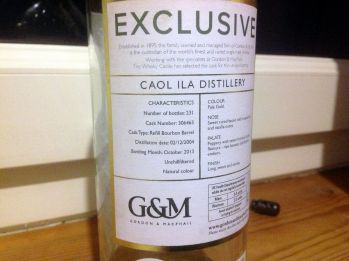
What to look for on a whisky label if you’re looking for a really special bottle – but don’t expect it to be “cheap”.
There are 2 aspects to this:
a) The number of times the cask has been used previously to mature Scotch Malt whisky
b) Whether the whisky is the product of single or multiple casks
To be classified as Scotch Malt Whisky it has to have been matured for a minimum of 3 years in the cask. Many distillers though will mature their whisky for a lot longer, usually around 10 years before they’re satisfied with the quality to release it for sale.
During the maturation period there is a complex interaction between the oak wood and the alcohol with the alcohol drawing out many of the oils and other components of the wood to create Scotch Malt Whisky. Up to 60% of theses vital ingredients can be drawn out after the first maturation of scotch malt whisky. During the life of a cask it’s easy to see that the wood can become quickly exhausted with the whisky produced from subsequent maturations being of a lower standard. If a tired cask is being used to mature whisky in it doesn’t matter how long the spirit is left in it to mature, the resultant whisky will lack quality/flavour. There are things that can be done to help rejuvenate the cask but the original qualities are never fully achieved.
The majority of malt whisky sold is the product of a number of casks ‘married’ together (up to 100), some good first refill/generation and some not so good 3rd or 4th refill/generation.
On the bottle label you should be looking for the whisky being single cask and 1st or 2nd refill/generation.
The spirit is matured in the cask at around 60%ABV. This results in an equilibrium being established between the strength of the spirit and it’s ability to draw out and “carry” the various oils, etc of the wood. Most scotch malt whisky is diluted with water and sold at around 40%ABV.
This dilution in itself results in the whisky becoming cloudy as there is no longer the concentration of alcohol to support the oils i.e. an emulsion is starting to form. There is nothing wrong with the whisky at this point other than it maybe appearing less appealing. To get around this problem much of the malt whisky sold is chill-filtered. Cooling the whisky makes the heavier oils more viscous allowing them to be removed by a5 to 3micro filter. The issue is that these heavier oils, etc are what give a good malt whisky it’s depth of character and flavour
You should be looking on the label for the words “unchillfiltered” or “non chill filtered” and the ABV should be 46% or more. If the whisky is below 46%ABV it’s a sure sign it has been chill filtered.
(One issue here is that some countries do not allow the importation of alcohol for re-sale with an ABV above 40%.)
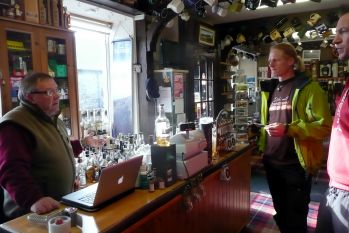
Whisky tasting under the expert guidance of Mike Drury when he was in control at the Whisky Castle
Whisky is stored in wooden casks, usually made of white oak. Presuming the spirit is being matured in a quality cask, there is complex interaction between the wood and the spirit. This interaction is a slow. The harsher flavours of the whisky are softened over time. The age of the malt whisky is an important factor in the quality of the final product though whisky doesn’t necessarily always continue to improve with age.
Generally you will be looking for a minimum of 10 year old whisky.
It’s tempting but don’t ever judge a malt whisky by its colour. A lot of malt whisky has caramel added to make it darker. It also of course alters the flavour. This is the only additive that is allowed to be added to Scotch Malt Whisky
You should also be looking for words like “natural colour” on the bottle
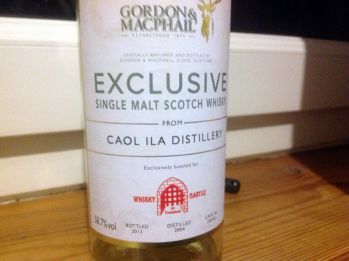
Exclusive whisky from Gordon & Macphail
Generally its independent bottlers who deal in high end malt whisky and available through specialist whisky shops.
Independent Bottlers:
……. to name a few.
Specialist Whisky Shops:
The Whisky Castle, Tomintoul is an independent whisky store with 500 malt whiskies listed online. They specialise in independently bottled, non-chillfiltered, non-caramalised, single cask, single malt whiskies.
Whisky month – join Scotland in a month-long celebration of our national drink. Whether you’re a whisky novice or a whisky connoisseur, there’s something for everyone to do, including our Mountains and Malts trip.
The Speyside Whisky Festival – discover the passion behind the world’s finest whiskies
Whisky trail – Follow the world-famous Malt Whisky Trail through Speyside to seven working distilleries, including a fascinating cooperage and a historic distillery.
Looking for something to do while your partner explores a distillery and whisky related stuff – try Three Bags Wool in Aberlour
As with all forestry commission mountain biking centre, you may need to be careful with your timing. If there is logging taking place, some of the trails may be out of bounds. Also, if you visit out of season (i.e. during the winter – as I did) the café may not be open. However, not to worry. There is a café close by at Laggan Pottery which comes very highly recommended.
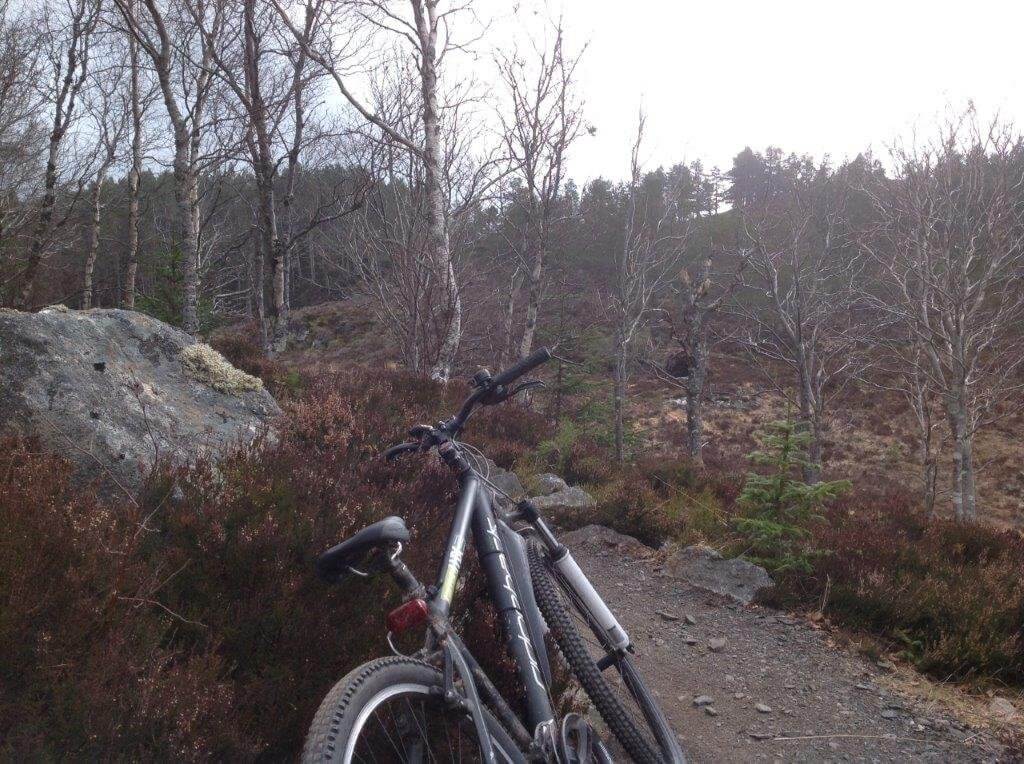
Riding on a red trail at Laggan Wolftrax
When I visited there was logging taking place so the green and orange trails were out of bounds. Unfortunately this means that this instantly made the centre unfriendly to family biking as only red and black trails were accessible.
The climb up to the red trails requires some fitness, out of season as there is no uplift available then. There used to be uplift available but there’s no mention of it on their website now so you’d need to check with them directly if it is available.
Find the trail map here
There is no bike hire available on site any more. A new bike hire shop is due to open in Laggan soon.
If you are staying at Fraoch Lodge, and you are wanting to hire bikes, you can’t go wrong with the hire bikes at Ride Cairngorms in Boat of Garten. The bikes Nash has available for hire are suitable for all the trails at Laggan, though you may want to bring your own bike is you are keen on riding black runs. Few if any of the bike shops in the area offer full-sus bike hire due to the cost of maintaining &/or replacing the bikes.
At the time I visited, the mountain biking centre at Laggan was not as friendly as we would have hoped. They have discontinued the uplift for the red runs and at that point both the cafe and the easier green/orange runs we closed. If the lower tracks are open, there would at least be some trails for the younger kids to ride, but they are quite short. It wouldn’t give a huge amount for the kids to do and in the summer you’d need to be on the lookout for midges. Glenlivet mountain biking centre was much more child friendly when we went there.
Watch out for events taking place at Laggan as the centre may not be open to the general public while the event is on or alternatively you may want to take part in the event. Don’t forget it’s not far to Fort William from Laggan and you can ride on the World Cup Downhill course there. The World cup in Fort William usually takes place in June.
Laggan hosts the following events:
Full details here
Distance from Fraoch Lodge: 31 miles (44 minutes driving time)
From Fraoch Lodge, turn left out of the drive and head out of Boat of Garten to the A95.
Follow the A95 towards Aviemore but turn right on to the A9 heading south.
Continue on the A9 until the turn off for Kingussie.
Turn right and go through Kingussie and into Newtonmore.
Drive through Newtonmore until you see Newtonmore hostel on the right. Turn right here onto the A86.
Follow the A86 past Ardverikie castle and along Loch Laggan until you see signs for Laggan Wolftrax on your left.
Mountain biking in the Cairngorms is one of the fastest growing sports in the area. Nowadays it is rare to go out anywhere and not see any cyclists. Perhaps we should try for a mountain bike/cycling friendly national park designation? What do you think? It is now possible to be a cyclist friendly cafe or cycle friendly accommodation or even a cycle friendly village. Why not a cycle friendly park? What would be the criteria?
Politics and campaigning aside – the Cairngorms are an amazing resource for mountain bikers of the widest kind. If you just like to get away from traffic and have an adventure, we’ve got routes for you. If you want an adrenaline downhill single track, there are also options. Should you want to take the family for a pootle round the forest – crack on there’s plenty for you here.
We’ve hand picked some routes for you below. There are no hard core mountain routes as we would not be comfortable suggesting that you head off into the high Cairngorms without knowing that you are very experienced mountain bikers with excellent navigation skills and preferably some familiarity with the area.
If you are interested in exploring mountain routes (eg to Ben Macdui) we are happy to offer you the details of recommended mountain bike leaders in the area.
Length: 16km: total ascent: 330m Time: 1.5 – 2.5h
Start point: Auchlean car park
This route is in “Scotland Mountain Biking: The Wild Trails by Phil McKane but please be aware that the bridge on the map (p113) at point no: 4 was washed away in 2009. You will need to ford the river or retreat back along the same route.
The ride can also be extended further along the valley to a bothy or if you are confident with your navigation (and fitness) you could ascend to Mullach Clach a Blair.
Also available as an extension to our Classic MTB routes in the Cairngorms (self-guided). This route is not included with the core routes as it requires a transfer to access the mountain biking in Glenfeshie. Please enquire directly for details.

Classic MTB trail
Time: 1hr – 2hr Distance: 7km
A superb family ride which could be started in Insriach/Coylumbridge (there is no parking charge there) or it is perfectly feasible to start the ride in Boat of Garten. The ride can be extending into ride no: 5 if you are looking for a longer day out on the bikes. Really only a short ride suitable for families even with young kids. Excellent cafe at the Rothiemurchus centre to refuel. Combine with a visit to the Highland Cattle, feed the reindeer or Treezone.
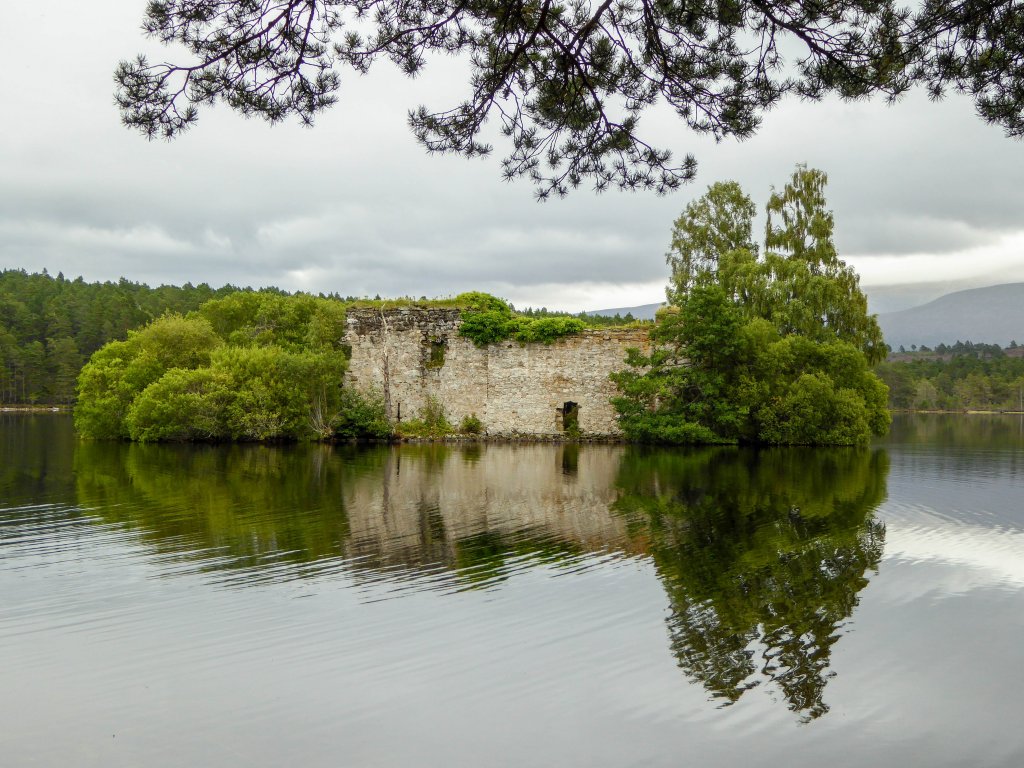
Classic short walk or cycle in the Cairngorms visits Loch an Eilean.
(see details in this blog – 11/04/18)

see details in this blog
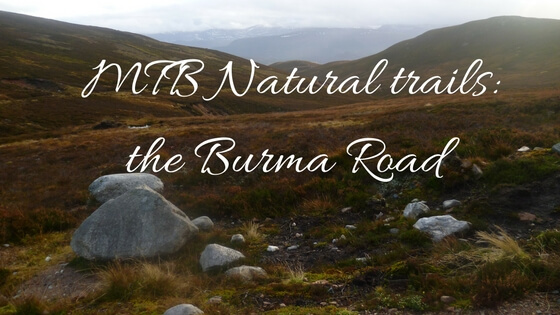
Time: 3.30h Distance: 32km
Starting from Aviemore
Described in Bike Scotland (Book Two) by Fergal MacErlean
This has to be one of the most popular bike rides in the area. Rothiemurchus estate is a fantastic area to ride the trails. You do have to watch out for tree roots in places and occasionally the odd muddy patch. There are quite a few optional extensions (or accidental extensions). There’s the possibility of extending on up to see into the Lairig Ghru (advanced riders only).

Loch Morlich
see details in this blog

Biking for all ages in Britain’s largest national park
Grantown has some great trails through Anagach woods and a wee skills section you can use to warm up before you start the route. You will need to be able to map read to link up the trails we are suggesting.
There are plenty of cafes to explore in Grantown including the High Street Merchants. The disadvantage is that they are all close by about 5pm.
Transfers available as far as Craigellachie along the Speyside Way. Call us to include Speyside Way transfers in your package unless you are considering shorter sections which also combine with the Strathspey Steam Railway and are part of our Under Your Own Steam package
This is an off-road/road circuit including a transfer from Fraoch Lodge and a visit to Glenlivet distillery for the tour. It is not focused on the trail centre at Glenlivet
Distance: 17.5km, starting from Alvie/Dalraddy
This is a linear route from Newtonmore to Boat of Garten so is the Badenoch Way with the first section of the Speyside Way and the linking section from Kincraig to Aviemore – total route is probably twice the length of the route described above.
Don’t forget the area is blessed with a huge number of cycle friendly cafes most of which are included on these routes.
Abriachan to Inverness (part of the Great Glen Way)
South Loch Ness Way
Learnie Red Rocks review – coming soon
Moray Monster trails review – coming soon
Best place to stay – Fraoch Lodge – though we are of course biased
Best place to hire bikes – Ride Cairngorms
[amazon_link asins=’0955082285,1906148104,190614852X,0955454808,1907025103,0948153733′ template=’ProductCarousel’ store=’1603-8102-0783′ marketplace=’UK’ link_id=’8569347f-328a-11e8-8fbc-f99ffca8b1e3′]
If you would prefer to investigate our hiking options both guided and self-guided, there are plenty of options across the highlands.
family adventures in the Cairngorms aimed at kids aged 5 – 12

Ascending Meall a’Bhucaille with 2 x 7 year olds and 1 x 4 year old.
Family adventures in the Cairngorms might not have the sea and golden beaches (we’ve only the one at Loch Morlich), but there is such a lot you can do with your kids here in the Cairngorms National Park, that some families return year after year.
Have a look at the various options we suggest below. We’ve picked a variety at a range of price points.
Taking a guided family adventure with Scot Mountain Holidays
Cairngorm Discovery – explore Britain’s largest National Park with our guidance. Enjoy some fabulous activities including some biking, some hiking and some more gentle creative pursuits like “throwing a pot” and creating your own wool at a small traditional mill.
Highland Family Adventure – for a full on introduction to the great outdoors. Enjoy some family time on hikes and wee bike rides throughout the Highlands. Visit Loch Ness. Enjoy the remote but spectacular scenery in Torridon. A mix of guided and self-guided activities for all the family to enjoy. Itinerary adaptable – call for personal quote.
Under Your Own Steam – best suited for the younger end of the age group, but routes can be adapted and lengthened to provide more of a challenge if your kids are keen cyclists.
Tailor-made Active Highland Tour – this area, the Cairngorms National Park, is the UK’s greatest outdoor playground. There is a lifetime of outdoor enjoyment here – on foot, by bike, gliding or canoeing. There should be something to suit everyone except the least active. It’s a great opportunity to get the kids outside enjoying nature. We can select from a massive range of activities and experiences to put together a tour to appeal to all the family from flying through the trees on a zip wire to outdoor treasure hunting or indoor pottery – there should be something for all – especially nature and wildlife lovers.
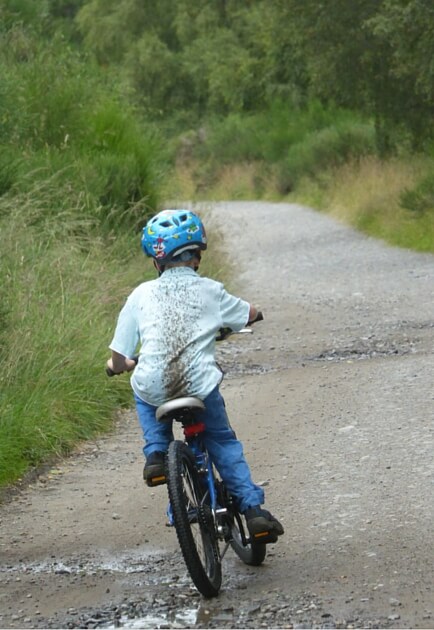
Family mountain biking in the Cairngorms
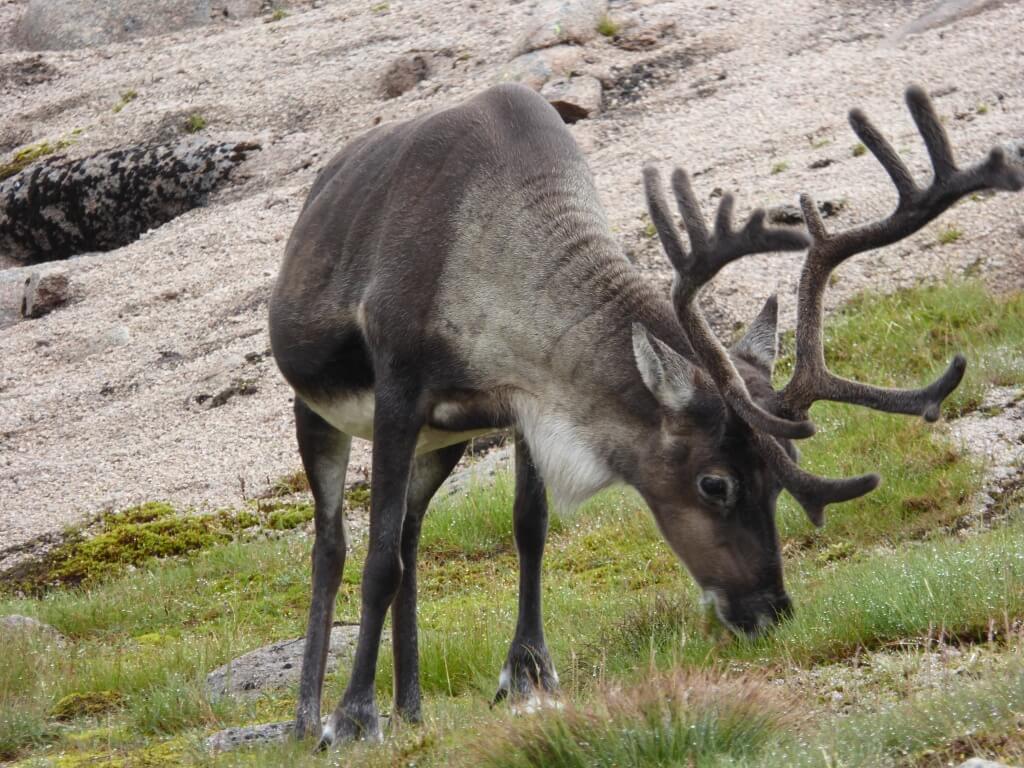
Visit the Cairngorm Reindeer herd in the natural environment (Cairngorms)
Zip wire – Treezone – River tubing – Gorge walking – Pony trekking – Landmark Forest Adventure Park – feed the deer – feed the reindeer ……
Contact us for full details or to include on your tour.

Chowing down in the Tentipi

Family Adventure Holidays in the Cairngorms
It’s very easy to be complacent about your surroundings when you live permanently in a beautiful place. The scenery becomes mundane and the choice of things to do “boring” because they are options open to you every day. When visitors arrive, it’s different. They don’t have the option of postponing their activities to next week; next month or next year. They want to enjoy themselves now and see and do as much as they possibly can. Here in the Cairngorms you’re almost spoilt for choice no matter what age you/your kids are. The beauty of our natural environment here in the Cairngorms is perfect for a family adventure holiday.
“It’s always wet.”
“It’s so cold.”
 It is a wee bit cooler here than in the balmy climate of London and the South Coast. If it wasn’t we wouldn’t have the snow in winter, the reindeer living here year round; nor the polar bears in the Highland Wildlife Park as well as the Amur Tigers. (Both the polar bears and the Amur Tigers are cold climate dwellers.) However, we also have a drier climate than the west coast of Scotland and Glasgow and also can be a lot drier than in the Midlands.
It is a wee bit cooler here than in the balmy climate of London and the South Coast. If it wasn’t we wouldn’t have the snow in winter, the reindeer living here year round; nor the polar bears in the Highland Wildlife Park as well as the Amur Tigers. (Both the polar bears and the Amur Tigers are cold climate dwellers.) However, we also have a drier climate than the west coast of Scotland and Glasgow and also can be a lot drier than in the Midlands.
If Wimbledon had been played in our local tennis club this year, we wouldn’t have had the same rain delays as at the All England Club. In fact this year, despite the moans of gardeners in England, it looks as if our own garden is going to be the most productive it has been for a long time. Plums, apples, strawberries, red currants and raspberries are all coming along nicely ready for the prime summer holiday season. (Rhubarb has been a bumper crop and is already transformed into Rhubarb Crumble ice cream and Rhubarb and Vanilla jam.)
There’s many a parent gets stuck after the birth of their child. The challenge of just surviving the day is too much to allow for anything else in their lives. The baby is the central focus of their lives and all previously enjoyed pass-times take a back seat. Unfortunately this can then give rise to a lot of resentment as time passes on and the new mother takes on the identity of “Mum” but feels that she is losing her own identity.
Everyone needs something to look forward to and as the old saying goes “a change is as good as a rest”. Perhaps a wee break from routine would re-energise the whole family.
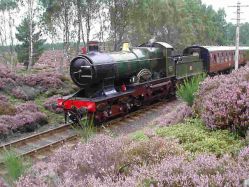
Enjoy the Strathspey steam railway during your visit.
Fortunately young children (pre-school and early primary school age) are for the most part a lot more adaptable than their parents give them credit for. The majority of them will still sleep when they are tired (even in the most unlikely of places). They’ll still eat when hungry and a new environment will be stimulating enough to entertain them. That’s them sorted. The trick then is to pick somewhere to take them which appeals to you as a parent but will not introduce more hassle to your life. So somewhere which is family friendly but not just in name.
There are self-catering cottages which pride themselves on being family friendly because they offer the use of cots, high chairs etc. To my mind this is not enough to be a family friendly facility. At Fraoch Lodge we have a variety of books and toys for wee ones along with a large garden for them to explore complete with a sandpit, garden tools, a digging area, a toddler trampoline and a slide; complete with personal guide (if desired) in the shape of the resident child, Gregor.
We can also offer the whole family or just the parents a chance to eat “out” while in. In other words, we can cater for you while the kids sleep upstairs, so you won’t need a babysitter, but equally can relax with a glass of wine and not have to cook yourselves. Or alternatively we can cook for the kids first and yourselves later or cook for the whole family together.
When you come to Boat of Garten you don’t even need to go far to entertain the kids:
Foraging for mushrooms in the Caledonian pine forests.
If you’ve already done the West Highland Way, you might be on the lookout for a new challenge.
Scotland is criss-crossed with public rights of way and is blessed with world-beating access legislation. It can make the choice of what to do next more complicated. We’ve picked out some alternatives for you here. Some of the options we’ve listed below may require you to have a wee bit more familiarity with navigational skills, than you might have needed on the West Highland Way.
is a high mountain pass through the center of the Cairngorms National Park. It is a minimum of 19 miles and you can walk it over 1 or 2 days. The main difficulty with the Lairig Ghru is not the length of the walk but the logistics. You can start the walk from either end, close to Braemar or close to Aviemore. However, there are no roads which run through the middle of the Cairngorms National Park. To return to your starting point, you will need to travel for hours by public transport via Aberdeen or Perth.
Alternatively, you could book our Lairig Ghru Logistics package and we will take care of everything except the walking for you. All you need to do is to book your transport to and from Aviemore. We will pick you up from Aviemore (if you’re travelling up by train), transfer you to Fraoch Lodge, feed you, give you a comfy bed and take you round to the start of the walk, then we’ll stay in touch with you so we can be at the end of the walk to meet you. We’ll take you back to Fraoch Lodge, feed you again.
If you would like to take a guide for the Lairig Ghru trip we can also organise this for you.

Self-guided Lairig Ghru logistics
The Great Glen Way is almost an extension of the West Highland Way. It runs from Fort William to Inverness. It is 79 miles long and for those of you who don’t know, the Great Glen is home to both the Caledonian Canal and Loch Ness.
There’s a high route alternative which gives a bird’s eye view down on to Loch Ness, but is probably too far away to spot Nessie without very powerful binoculars.
Top Tip: Stop in at the Loch Ness Clayworks tea room. Watch out for midgies if you sit outside on a still day. It’s a lovely peaceful spot above Drumnadochit and if you have a wee space in your pack, the pottery Rebecca produces is lovely. (We have several examples here at Fraoch Lodge.)
It is relatively easy to arrange to walk the Great Glen Way on your own. However, if you prefer the security of knowing that everything is arranged, you can always contact a company like MacsAdventures. MacsAdventures specialise in arranging self-guided long-distance walks for their customers
If you would like to cycle the Great Glen way, we would recommend speaking to “Ticket To Ride” who are based in Inverness. Ticket to Ride can either provide a specialised bike taxi service if you have your own bike, or they can arrange bike hire/a self-guided biking adventure for the whole route.
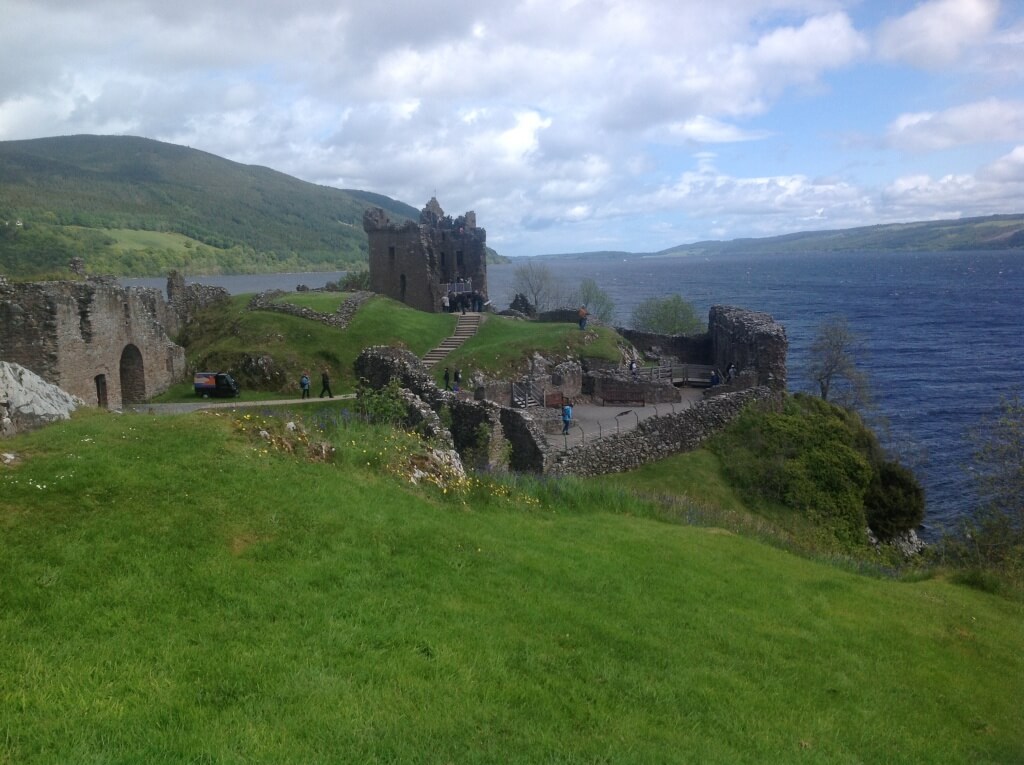
Visit Loch Ness
Moray Coast route.
The Moray coastal route is only about 50 miles long and is equally accessible to cyclists.
This route has marvellous landscapes from rugged cliffs, caves and sheltered coves to fishertown harbours and sweeping stretches of sandy beaches. Moray has a coastline alive with wildlife that would be the envy of many other regions in Britain. Many visitors are drawn by the resident bottlenose dolphin population or by the abundant bird life found along the rugged cliffs.
The Moray Coast has great variety in scenery, and you will always be rewarded with great views out over the Moray Firth. The coastline has great wilderness quality with imposing cliffs and rare plants, but is never far from civilisation. The path links a number of attractive coastal villages and towns, with quaint harbours and extensive services and accommodation.
The route abounds with history. You can see the fishing heritage of the coastal settlements at a number of local museums and the ice houses of Tugnet and Findhorn. Burghead has the remains of a Pictish fort and harbour warehouses designed by Thomas Telford.
TIP: Some of the route is on hard surfaces, particularly in and around the villages, which can be hard on the feet. Personally I would recommend this route as a bike ride. Scot Mountain Holidays can help with the logistics if you have a minimum of 2 people interested in walking or cycling this route.
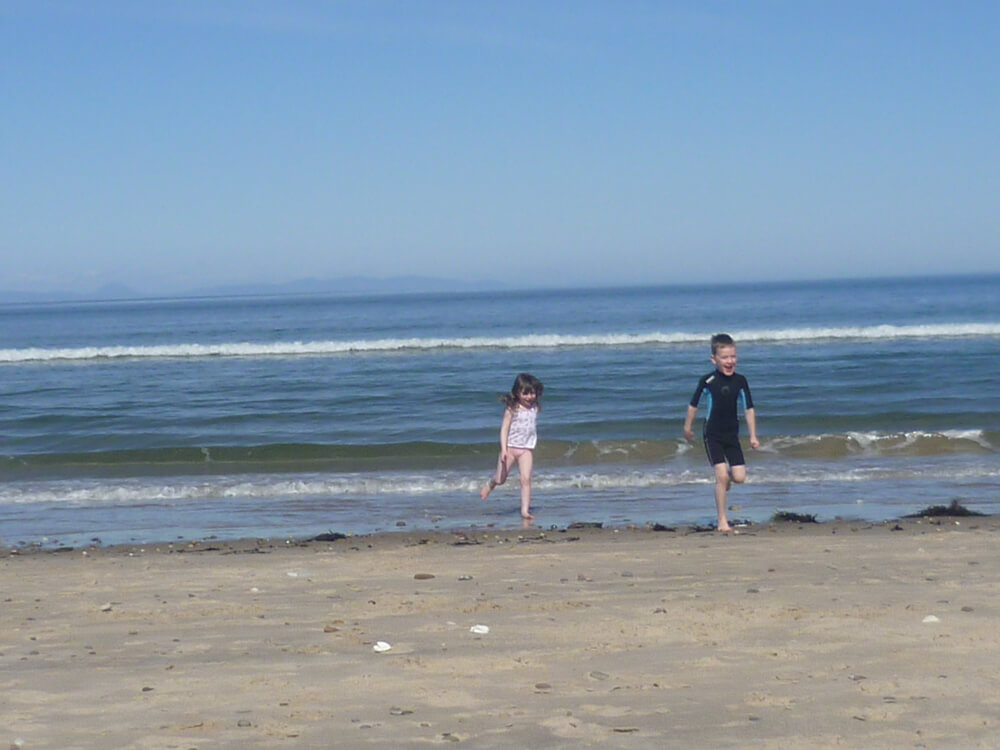
Playing on the beach at Findhorn
This route is on my hit list to do on our mountain bikes. If you choose to do this route, you’ll find it much quieter than the other side of Loch Ness. For this route you’ll need a slightly higher level of fitness as the path is more undulating.
Main advantage: you’ll well away from the main A82 and the crowds who visit Drumnadrochit.
If the weather is in your favour, you’ll have amazing views not only of Loch Ness, but also of the mountains behind. Take a look at the Walkhighlands page for the route. The pictures there are inspiring. Can’t wait to follow this route in the Spring. Only issue – as with all long distance path is co-ordinating the pick up and drop off at the ends of the route, but the public city buses run from Inverness to Dores (one of our favourite spots on the south side of the loch.
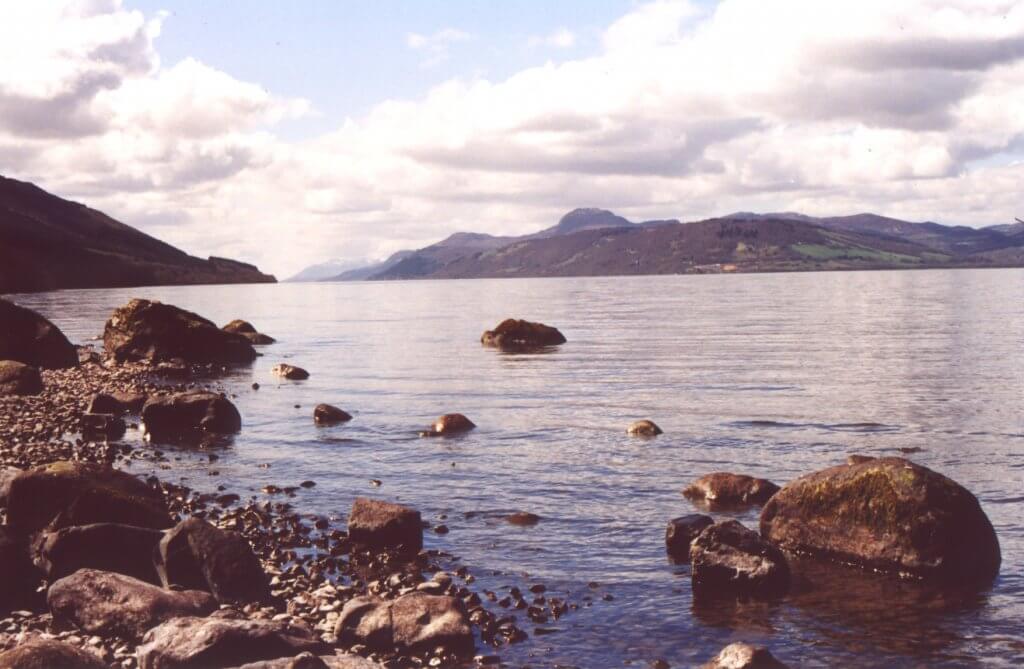
Loch Ness from the shore at Dores
This is the long distance path for whisky lovers. I forget how many distilleries you’ll pass but really you can hardly walk any of the sections without passing a distillery. Unfortunately some of them are not open to visitors, like Knockando, but if you’re prepared to make some small detours you can visit distilleries like Cardhu.
The Way is not exclusively about distilleries though. You’ll also pass through some classic Caledonian Pine Forests on the sections between Aviemore and Grantown on Spey with plenty of opportunities to forage for wild berries (raspberries and bilberries) and mushrooms (particularly chanterelles in the summer).
NB Carrbridge is currently undergoing consultation to install a path which will connect the village to the Speyside Way. Watch this space for more details.
There area already several options to extend the Speyside Way or even to turn it into a loop. You can connect with the Moray Coastal Path, the Dava Way, the Tomintoul Spur, and the Badenoch Way. Quite a diverse option which plenty of opportunities to customise your walk. You can even add in little diversions like a visit to Knockando Wool Mill (a favourite spot of ours) or the Cooperage (where they make the whisky barrels) or Ballindalloch Castle.

A cooper hard at work repairing casks at the Speyside Cooperage
The Copper Dog (at the Craigellachie Hotel), the Mashed Tun (in Aberlour), Knockando Wool Mill (for a light lunch or cake stop), the High Street Merchant (in Grantown on Spey), Nethy House – cafe with rooms (Nethybridge), the 1896 Gallery in Boat of Garten and the Old Bridge Inn in Aviemore.
A completely customisable, tailor-made adventure which starts with one day of guided exploration or navigation training in the Cairngorms. From here you can take your adventure where you please – more guided days, tours or supported exploring under your own guidance. Call us to discuss or for a quote. Check out some of the other experiences which guests have opted for from their bucket lists.
For guided adventures check out our full programme
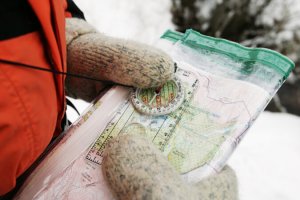 Dachstein mitts don’t necessarily mean that you won’t be able to use a compass or to navigate, as shown by our director Andy Bateman
Dachstein mitts don’t necessarily mean that you won’t be able to use a compass or to navigate, as shown by our director Andy BatemanAutumn and early winter is the time when the contrast between warm seas and cold air is at its greatest. This has the effect of injecting even more energy into our already turbulent skies. Then the weather at this time is even more changeable. In addition, the ground is often covered by snow. The snow covered ground merges with the cloud. Flat light conditions as well will make navigation even more difficult as everything you see appears to be the same colour. This doesn’t mean that you need to hand up the mountain boots until Spring. It might mean that you should consider brushing up on your navigation skills so you can deal with the shorter days (flat light) and the potential for more inclement weather (autumn/winter).
Winter navigation has been described as a bit of a “black art”. This isn’t a particularly helpful phase for anyone trying to get their head around the subject. Dealing with even the worst of winter white-outs isn’t rocket science. It does require the right approach, mindset and plenty of practice.
Navigation accuracy operates on two levels:
There are so many variables in the mountain environment that it is important not to overlook “error management”. Looking back to when I did my summer ML many moons ago I had too much focus on the former and didn’t really appreciate the latter.
Logically if we get our distance and direction right we will get to our objective. The most common way people get lost in the mountains is when they allow an error in their distance and direction to get out of control. You must never allow an error in your distance and direction estimate to become greater than the range of visibility. A 10 % error in distance or direction over 500m will be a quarter of that over 2 km in real terms.
Keeping your navigational legs to below 1 km in winter should be one of your key aims but to do this requires more waymarking points/features. For this you’re invariably looking to your contour interpretation skills. On many occasion I have heard it be said “the Cairngorm Plateau is featureless”. It isn’t, it’s just that the features are often a lot more subtle. You need to be a skilled map reader to pick them out.
Don’t “put all your eggs in one basket”. Accuracy in one particular technique or skill is good but don’t let this tempt you into relying on one or two techniques. By employing a number of skills simultaneously they should confirm each other.
An additional technique that I and mountain navigation course students have found very useful is to use a very comprehensive and detailed timing & pacing chart (see extract below). In the extreme left hand column you have your double pace rate (dp) with the distance running along the top. Working on the basis of + or – 5 double paces per 100m is within the realm of acceptable error, it gives you the acceptable error for a particular distance.
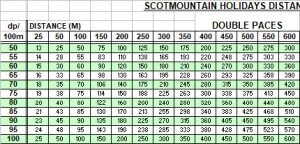 Pacing chart developed by Andy Bateman to keep navigational error when using timing and pacing to a minimum
Pacing chart developed by Andy Bateman to keep navigational error when using timing and pacing to a minimumFor example, if you estimated you’re going to do 595 dp’s over for 850m (dp rate of 70) and you end up doing 616, a quick reference to the chart shows you that this figure lies neatly between what you estimated and the next rate up of 638 dp ie within the acceptable range of error. To be 21 dp out over 150 would be well off the mark. This information can then be used in conjunction to what other skills and techniques are indicating about your position.
With all the tactical techniques of aiming off, attach points and collection features, at some stage in their execution they all correct the error. If applied appropriately they can be used to great effect and can improve you overall accuracy and efficiency
Contour interpretation and having that 3D image of terrain in your mind is the focal point of mountain navigation skill. It is what the information fed back from all the other skills and techniques relates to. In the worst conditions you contour interpretation skills it may offer the first and only indication that your drifting off your bearing.
To try any of these techniques in practice book one of our navigation courses or a 5 day winter skills course.
All content © Copyright Scot Mountain Holidays 2024
Responsive web design by Summit Web Solutions